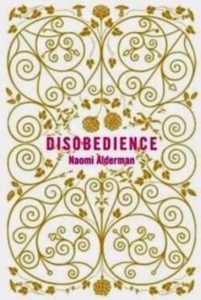Disobedience – Written and Filmed
 I remember devouring and excitedly extolling the virtues of Naomi Alderman’s 2006 novel, Disobedience. Having recently watched the 2017 film based on the book, I am even more impressed, albeit also emotionally drained.
I remember devouring and excitedly extolling the virtues of Naomi Alderman’s 2006 novel, Disobedience. Having recently watched the 2017 film based on the book, I am even more impressed, albeit also emotionally drained.
Subjective Appreciation
In my eyes, Disobedience is worthy of a five-star rating. But I recognise that the film’s themes may resonate more with those for whom the film deals with familiar territory, and at times touches still raw nerves.
When I read this exceptionally well-written and thus eminently believable book, I felt that Naomi Alderman had succeeded in conveying the emotions associated with departing and revisiting a past life that is no longer welcoming, because you chose to leave, and to which you are not returning.
The Story
Disobedience introduces us to Ronit, the daughter of a prominent North London, Orthodox Jewish Rabbi. She lives in New York but returns home following her father’s death. She is the shunned daughter who left the community after her father discovered her same-sex relationship.
On her return, she is shocked to find that her previous lover had married her cousin. He is a sympathetically portrayed young Rabbi who had been Ronit’s father’s disciple and expected successor.
Whether the two young women rekindle their relationship depends on whether you read the book or watch the film. Nevertheless, both versions of Disobedience come up with similar realistic and non-cliched endings.
 A Life Left Behind
A Life Left Behind
The themes of Disobedience revolve around leaving and revisiting a largely closed religious community.
A Freedom to Change or Leave
What freedom to choose means for those who grow up in such a religious community is particularly well handled.
Both the book and film, capture the essence of the often under-appreciated dilemma, and sense of loss associated with leaving such a close-knit religious community. In this respect, some of us find the film’s depiction to be unnerving. To others, Disobedience may provide an insight into both the costs and gains of exercising the freedom to leave.
The portrayal of Physical and Emotional Love
The film’s focus is more on telling the love story of two young women. It sets a benchmark in its superb handling and portrayal of melancholic and sensual love. One scene, in particular, captures the essence of physical love, both realistically and as a reflection of the lovers’ torn emotions.
However, should you prefer to forego the sex in favour of fleeting carnal thoughts and longing, then the book may be the better version of Disobedience for you. I reluctantly concede that the book’s handling of the issue of past forbidden love may be more realistic than the reignited passion of the film. The filmmakers could be criticised for simply spicing up the film for viewers. Even if that is the case, it is done without taking away from Alderman’s brilliant creation.
Superb Acting
The acting is excellent, with Rachel Weiss convincing as Ronit, the prodigal daughter. However, in my view, the standout performance is that by Rachel McAdams, as Ronit’s love interest, Esti. To the film’s credit, the characters, and in particular, the religious characters, are not presented in a biased or caricatured fashion.
Sacred and Contemporary Music
Finally, I must mention the film’s music. It is notable for the haunting Jewish songs and prayers. But equally, I loved the contrasting, yet most appropriate contemporary music, including The Cure’s, Lovesong.